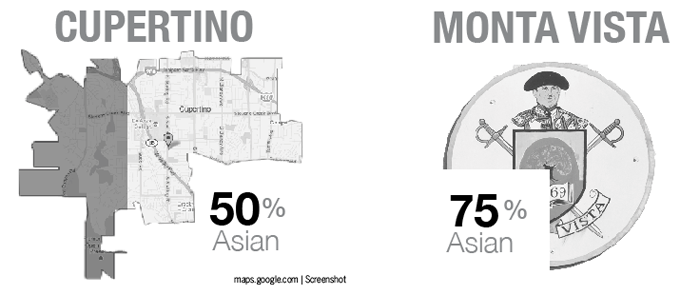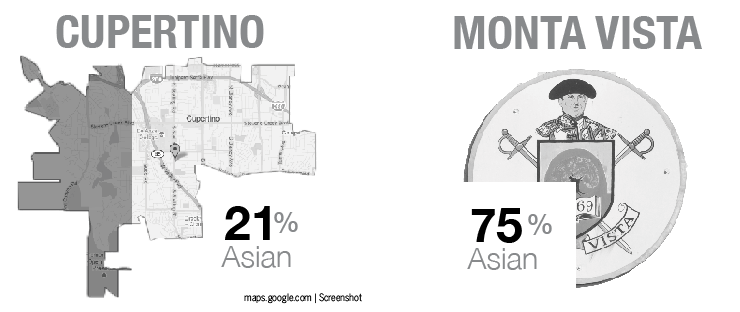
In the court my house is located in, seven out of ten households are homes to Caucasian families. In my classes, I am surprised when there are more than three Caucasian students surrounding me.
According to real estate research site CLRsearch, in 2010, 50.39 percent of Cupertino citizens were any form of Asian while the MVHS school profile on Schoolloop reports that 75 percent of current MVHS students are Asian. 43.33 percent of Cupertino citizens were Caucasian in 2010 while 21 percent of MVHS students are Caucasian.
This is what I think leads to an unnoticed disconnect between the white and very much elderly population of Cupertino (whose children have moved away) and the newer immigrant population (whose children are the sources of the large Asian percentages we see in our school environment).
The disparity between percentages is underplayed and under-acknowledged in our community. But I believe it leads to something pretty significant that is lost from our communal lives.
There seems to be this hidden gem tucked in the insides of Cupertino: one that will probably disappear in the coming generation; one that students fail to notice on our isolated campus environment; one that is embedded in the roots of Cupertino at the doorsteps of the houses on the other side of the court. Sometimes, I see hints of this gem from those teachers (especially substitutes) who make brief references to the Cupertino ìback in the day.î
As a Cupertino citizen and a MVHS student, I can honestly say that I do not know enough about this cityís past. Other cities across America seem to thrive on their history; what was this place like 20, 30, 40 years ago?
What has changed?
Who lived here?
Where are they?
A part of this gem, this history, and the answer to these questions must be buried in this subculture of elderly Cupertino citizens, undiscovered by the transitioning population. As a staff, we decided to explore this with our decision to focus on community veteran life as our Special Report topic.
This introduction and assimilation of two polarizing populations of this city links to our coverage of the community around us, which is not something our staff should be hesitant about, but instead something to embrace ó we donít want to lose that gem of the mosaic area around us.
Correction: The percentages in the photo were corrected from the printed October Issue.






